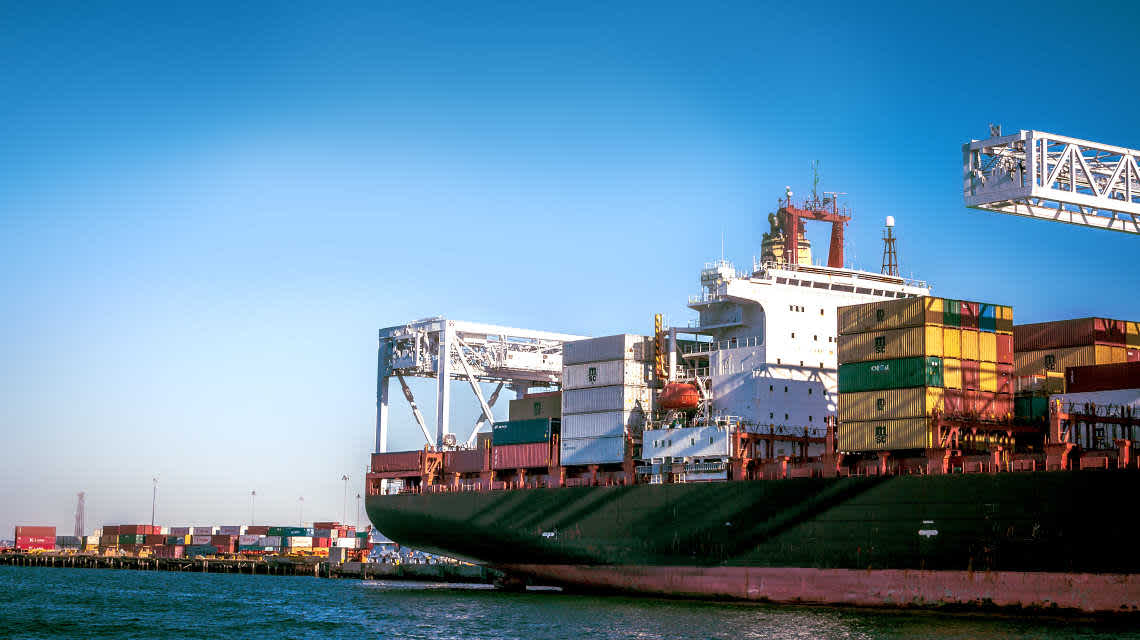
February 8, 2021
The Definitive Guide to Ocean Freight Shipping in 2021
The Definitive Guide to Ocean Freight Shipping in 2021
Status Quo No Longer Works
The ocean freight market has been caught in a vicious market cycle that has created levels of congestion never seen before. Spot rates have soared; and space has become a premium for those who are importing and exporting goods across the globe. For now, that volatility looks here to stay—at least for the foreseeable future. That said, it’s more important than ever to reassess processes and not continue with business as usual.
Crucially, what may have worked at the beginning of 2020 may no longer be considered a best practice. For those who are unprepared, the consequences can cost time and money. But, there are a few steps buyers can take to help ensure smooth sailing for their shipments.
This guide will help you:
- Manage market challenges to help build more predictability and resilience into your supply chain
- Make the most of interactions with your ocean transportation service provider
- Ask the right questions to negotiate the best contracts
Consolidating the Market Effects
The situation in the ocean market is complex. Beginning with factory shutdowns a year ago, a domino effect has been triggered. In the US and Europe, imports are up. Meanwhile, though, the US is seeing a decline in exports. There has been a dramatic shift from services to goods as
customers spend more time at home. Businesses across the board have been fire-fighting since March. Many have faced inventory shortages, unable to keep pace with the increased demand.
Despite people working from home, demand did not drop in the summer. As people became accustomed to working remotely, Flexport saw widespread port congestion, which has had a notable impact on the TAWB, TPEB, and FEWB trade lanes. The backlog of cargo from the spike in imports during the last half of 2020 (up by nearly 50%) sits waiting to be offloaded.
According to Nerijus Poskus, Flexport’s VP of Global Ocean, equipment supply has remained a huge stumbling block. In the US, for example, supply of chassis has been low. Roughly 80% of chassis are being used at any moment and 13% of chassis are currently out of service. For the EU, the container availability shows positive trends, but the tide hasn’t turned yet.
In short, the multitude of factors at play in ocean freight make the market unpredictable, at best.
With that in mind how can buyers find reliability in such a volatile market and make smart purchasing decisions? The key is to build resilience and flexibility into the supply chain, starting with optimization.
Most conversations with freight forwarders follow the same formula: establish cost from point A to point B, based on minimum quantity commitment (MQC) and available TEUs. This sounds clear enough, but vital details often go unmentioned. To reduce risks to your supply chain, there are a few key factors to consider.
Take Your Time
While you shouldn’t delay, there’s no need to panic and rush into securing contracts. The best place to be is in the middle; overpaying may make your goods less competitive and underpaying may risk cancellation if things take a turn for the worst. Wait for larger importers to sign and set their baselines to get the best deal in terms of price. But be aware that this can vary, depending on your industry.
What Will Your Volumes for 2021 Be?
It’s never been as important to try to predict volume. When negotiating contracts, think about allocation: the wider the range the higher the price. Without an accurate prediction, you’ll pay more or find your cargo delayed. Not all carriers or forwarders can give you allocations, but it’s worth asking the question.
Understand Contract Terms
It sounds obvious, but more so than in the past, the prices you will be receiving will likely be subject to peak season charges. Make sure you read the terms and conditions thoroughly and understand what the contract is subject to.
Ask:
- Is there a ceiling for volumes or can this be negotiated?
- What are the service capabilities? Is it possible to optimize routes to increase reliability and on-time performance?
- How likely is my cargo to get rolled?
- Don’t let a hurried conversation with unclear implications result
- in you committing to unfair terms and conditions.
Prefer to read this as a PDF, download here
Optimize for Resilience
In addition to negotiating the best terms, it’s also important to optimize your supply chain where possible to build in resilience—meaning having a well organized and informed supply chain, for effective inventory management and forecasting. Organizations must have quality real-time data and reporting metrics that help plan ahead and adapt to market changes and unforeseen delays.
Supply chain transformation is possible, and perhaps even more important, in times of a pandemic. Optimizing supply chains means thinking carefully about how to plan for the year. This could be anything from the systems you use, carrier strategy (multiple carrier strategy vs lowest price from a single carrier), your visibility on inventory, or the strength of connections to suppliers.
For the best outcomes in 2021, plan to move a portion of freight by premium contracts, which can offer space guarantees, the promise of no-rolls, prioritized discharge, and (for the US), chassis availability. Also consider tailoring your supply chain strategy to prioritized products and availability of stock. This becomes especially important for products that are selling well and in high demand.
Expect to Pay More
To be safe and ensure you are resilient against unexpected issues, plan to pay more for the full year, not just the first half of 2021. This is especially important if you are on a fixed contract or the spot market. That said, we don’t expect rates to rise as high as during the first part of 2020.
Conclusion
Before you sign anything, be ready to ask questions and press for details.
- Understand your commitment in granular detail. Explore space guarantees and multiple back-up plans to mitigate risk of cancellations. Ask about volume limits and watch out for fuel surcharges and other hidden fees.
- Don’t rush contracts and remember specific, digital contracts will likely carry more weight in 2021.
- Try to predict volume. Negotiate weekly space allocations in advance: the wider the range, the higher the price. If you cannot predict well, you’ll pay more or find your cargo delayed. Here again, data and analytics help inform reporting for better planning and forecasting. Staying up to date with the latest information is essential, so you can keep in step with trends shaping specific industries. Flexport’s guide 5 Steps to Gain Value from Forecasting can help.
- Choose a freight forwarder that’s up to date on all the changes to the ocean freight market and has the technology, analytics, and hands-on supply-chain expertise.
While the market may seem far from predictable, there are ways to build resilience into your supply chain. In addition, the supply chain has become better at dealing with uncertainty; and there seems to be signs that disruption could be easing in 2021.
Carefully preparing to face an unpredictable ocean market can help you navigate it successfully.
While you’re here, you might also be interested in:
- If you have any questions in regards to your ocean freight strategy and you would like to speak to an expert, reach out here.
- If you would like to get a weekly update regarding the trends and events that impact the freight market, detailing pricing, capacity, volatility, and more - sign up here.



